
Pelvic Health and Back Pain: The Overlooked Connection
That nagging lower back pain might not be "just your back." Your pelvic floor is part of your deep core system, and when it's weak or dysfunctional, your spine loses...
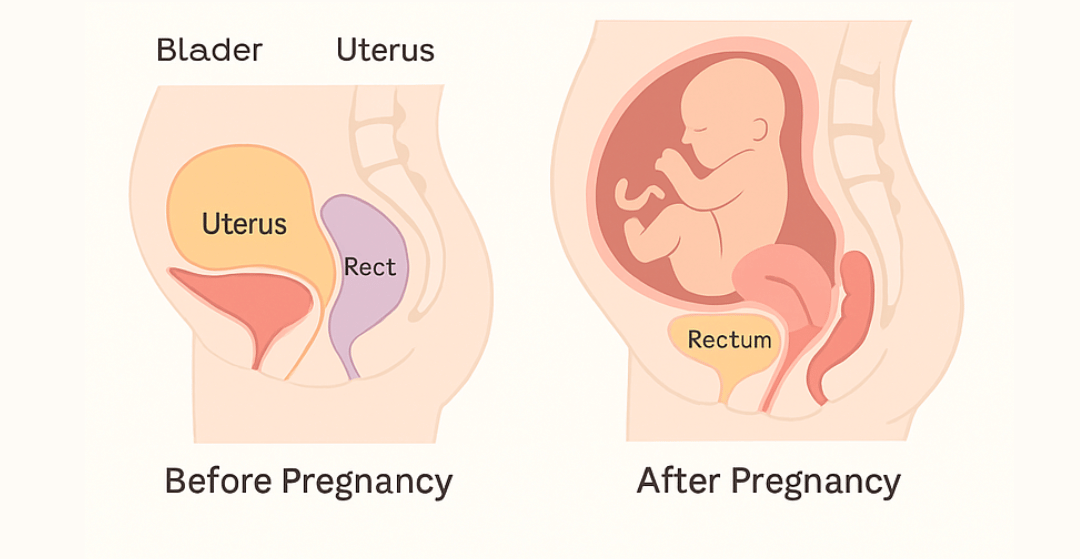
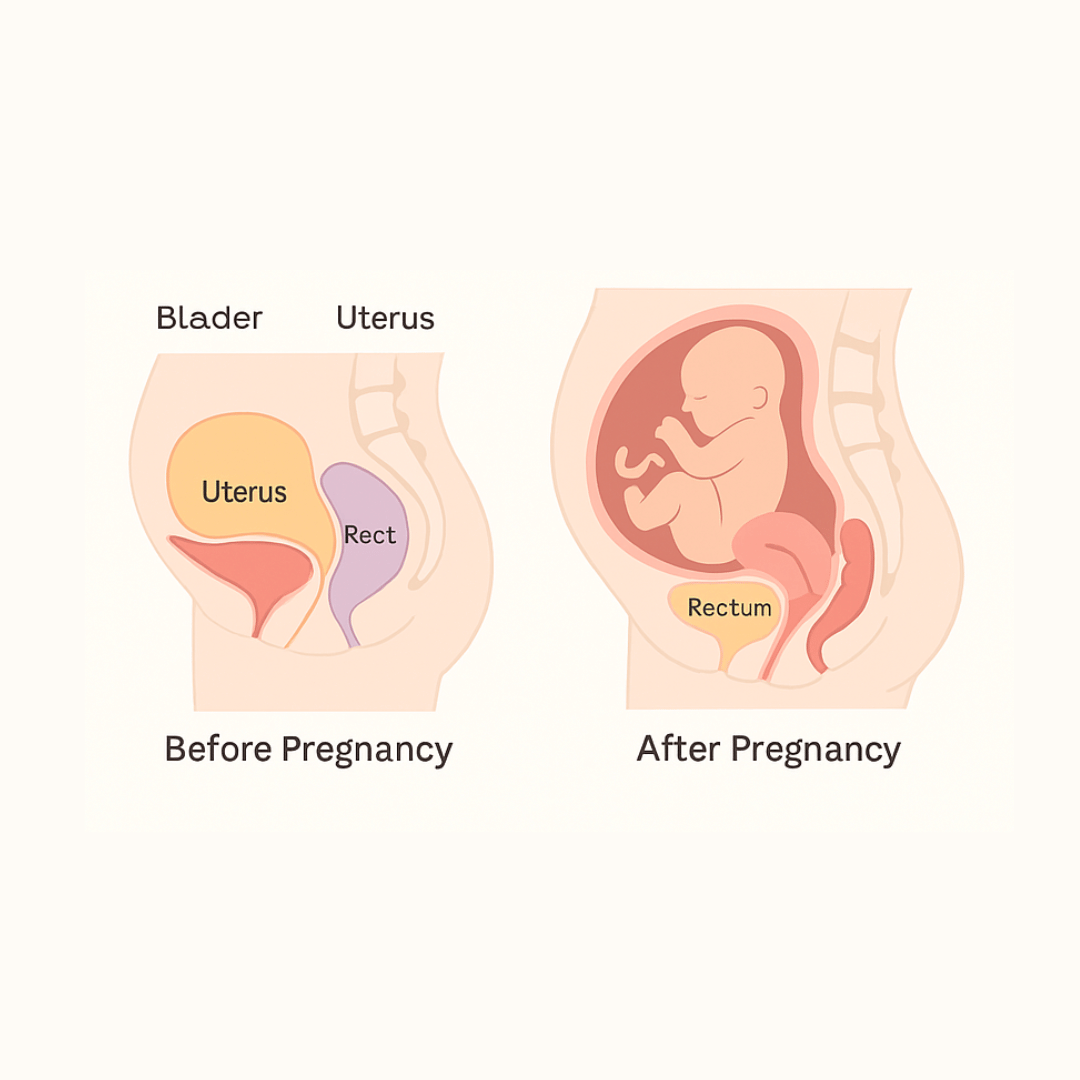
Vaginal delivery, C-section, and pregnancy itself can all stretch, weaken, or strain the pelvic floor. This may cause leakage, heaviness, or core instability. These changes are normal — and with proper support, recovery is possible.

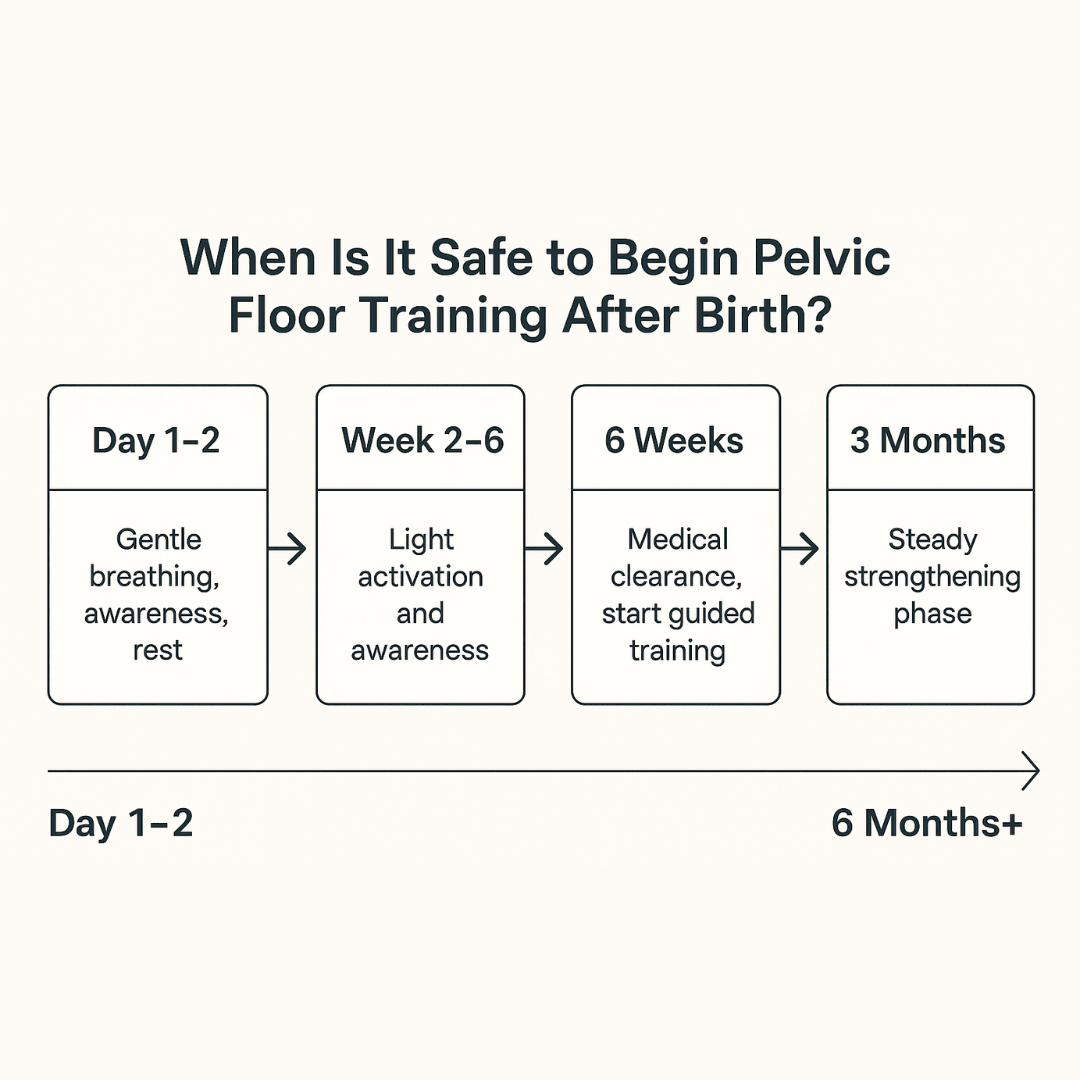
Every birth recovery is unique. Gentle awareness and breathing exercises can often begin within days of delivery, while more structured pelvic floor strengthening usually starts after your 6-week postpartum checkup. Over the following months, you can gradually build strength and coordination. Always follow medical advice and progress at your own pace.
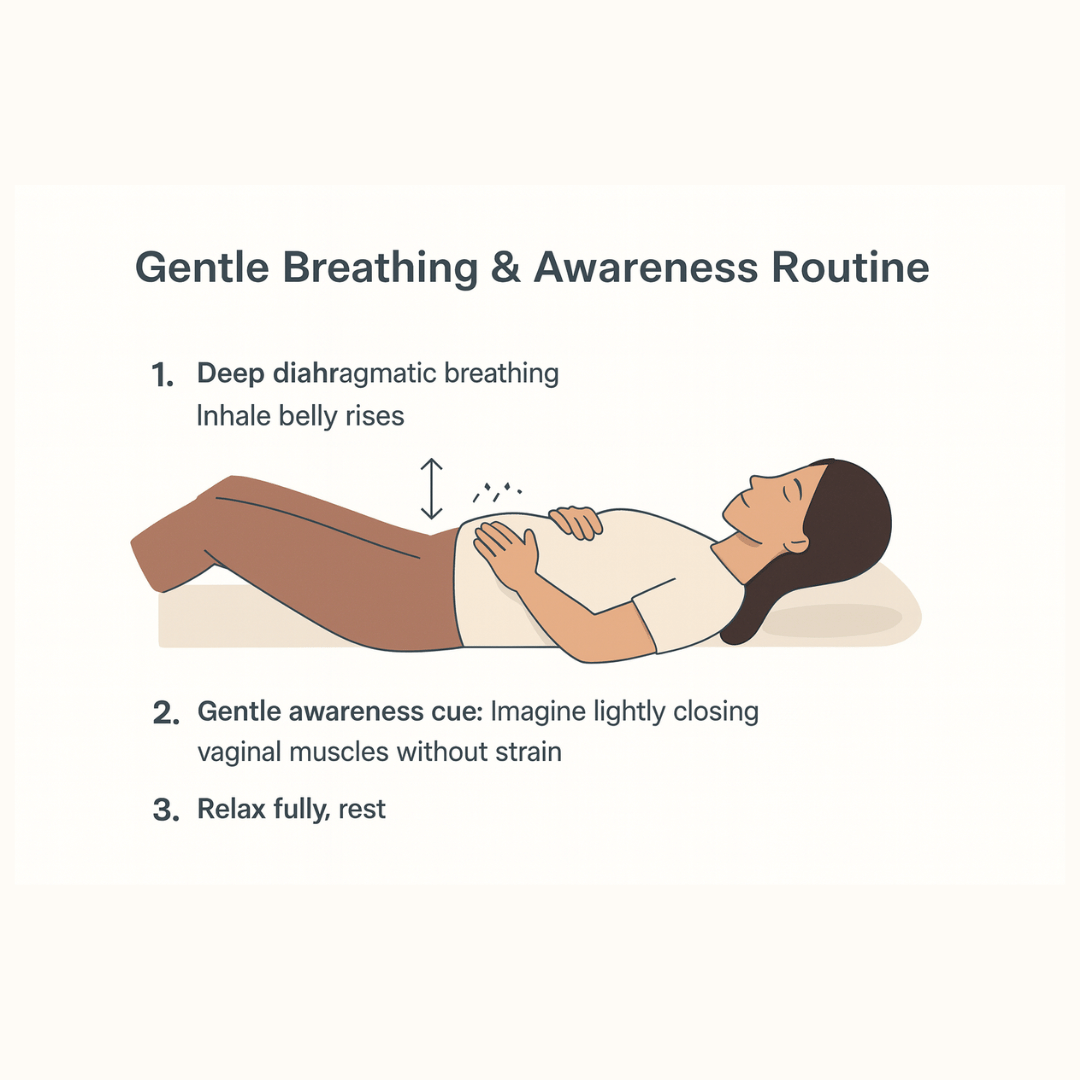

In the first days and weeks after birth, your body needs rest, not pressure. The safest way to begin recovery is with mindful breathing and simple awareness of your pelvic floor. These gentle actions help circulation, reduce tension, and reconnect your mind with your core muscles. Think of it as planting the first seeds of recovery—small movements that build the foundation for stronger training later.
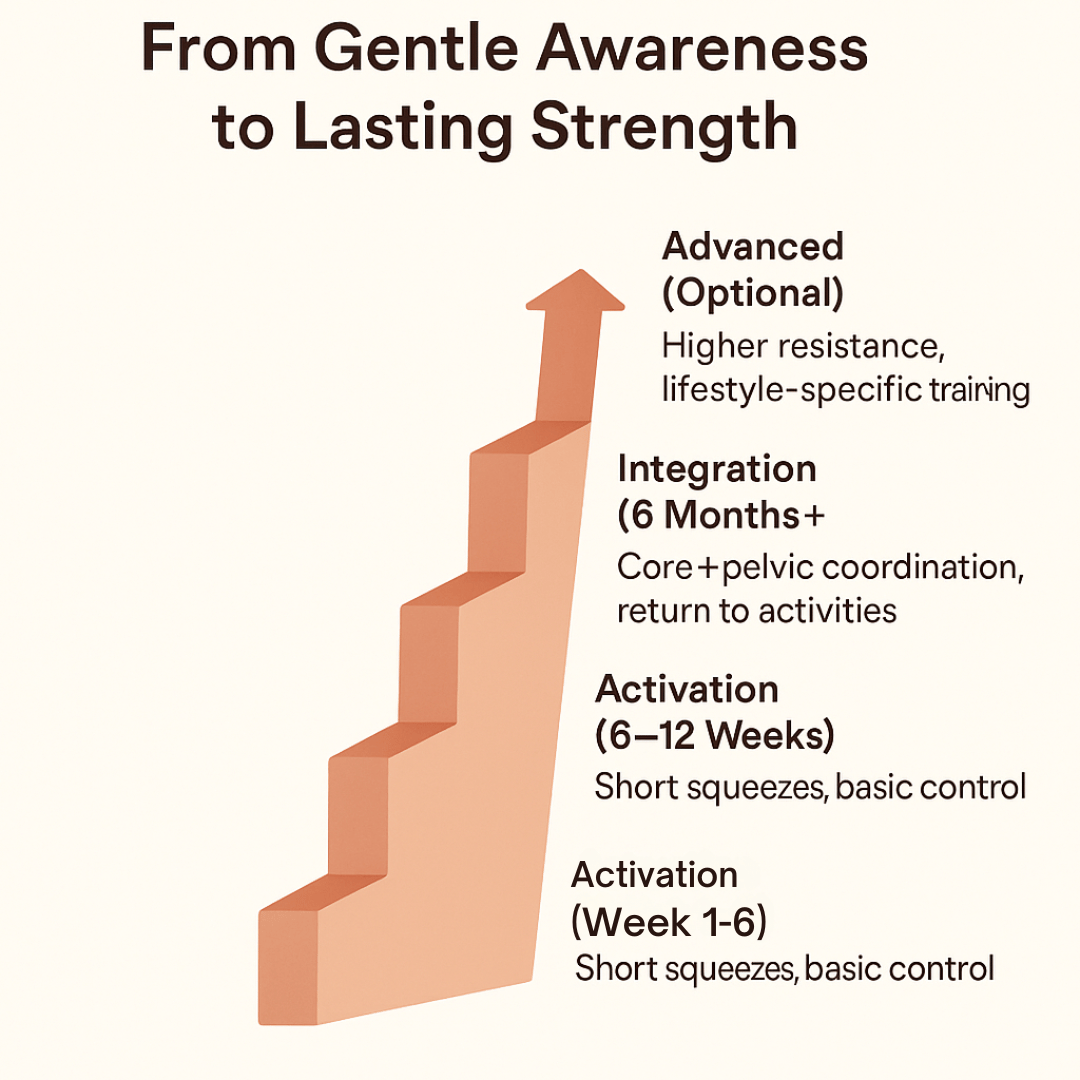

Pelvic floor recovery is not a sprint—it’s a gradual climb. After your first gentle steps, structured training helps you restore stability and control. Start with short, light contractions, then progress into longer holds, more repetitions, and eventually, advanced routines that integrate breathing, core, and movement. Think of it as building a ladder: each rung strengthens your base, so you feel more confident and supported with every stage.
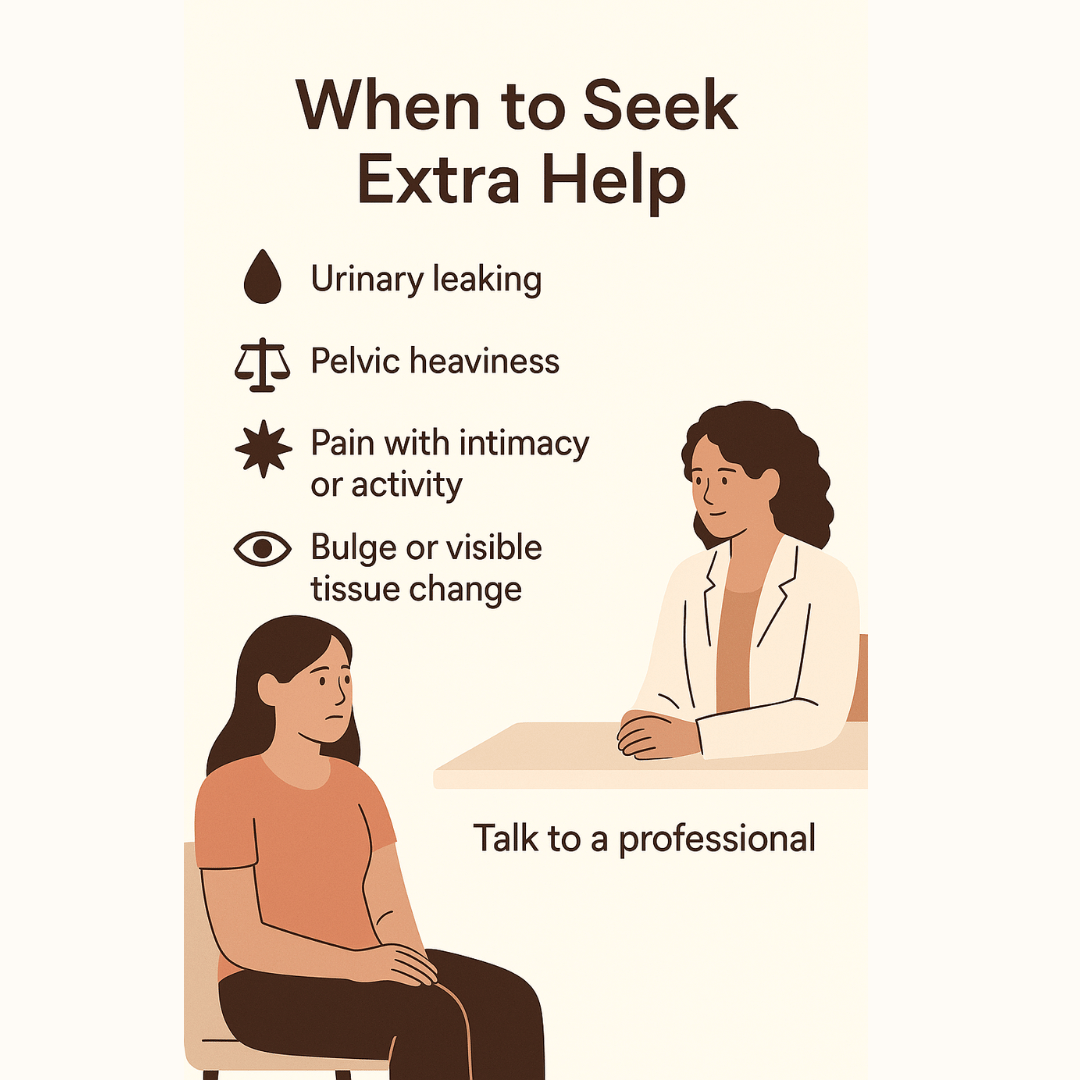

While many women recover well with gentle exercises and progressive training, sometimes your body signals that it needs extra care. If you experience ongoing leaking, pelvic heaviness, pain during daily activities or intimacy, or a visible bulge in the vaginal area, these may be signs of pelvic floor dysfunction or prolapse. Seeking help early can prevent issues from becoming long-term. Pelvic health physiotherapists and medical providers can give tailored assessments and treatments to guide your recovery safely.


Consistent, gentle-to-progressive pelvic floor work doesn’t just help you “exercise better”—it makes everyday life easier. As coordination and strength return, most women notice fewer leaks, better core support, improved posture, and more comfort with movement and intimacy. You’ll feel steadier when lifting the car seat, walking upstairs, or going for a jog, and more relaxed through your abdomen and back. These small wins compound, building confidence and a sense of control over your body again.
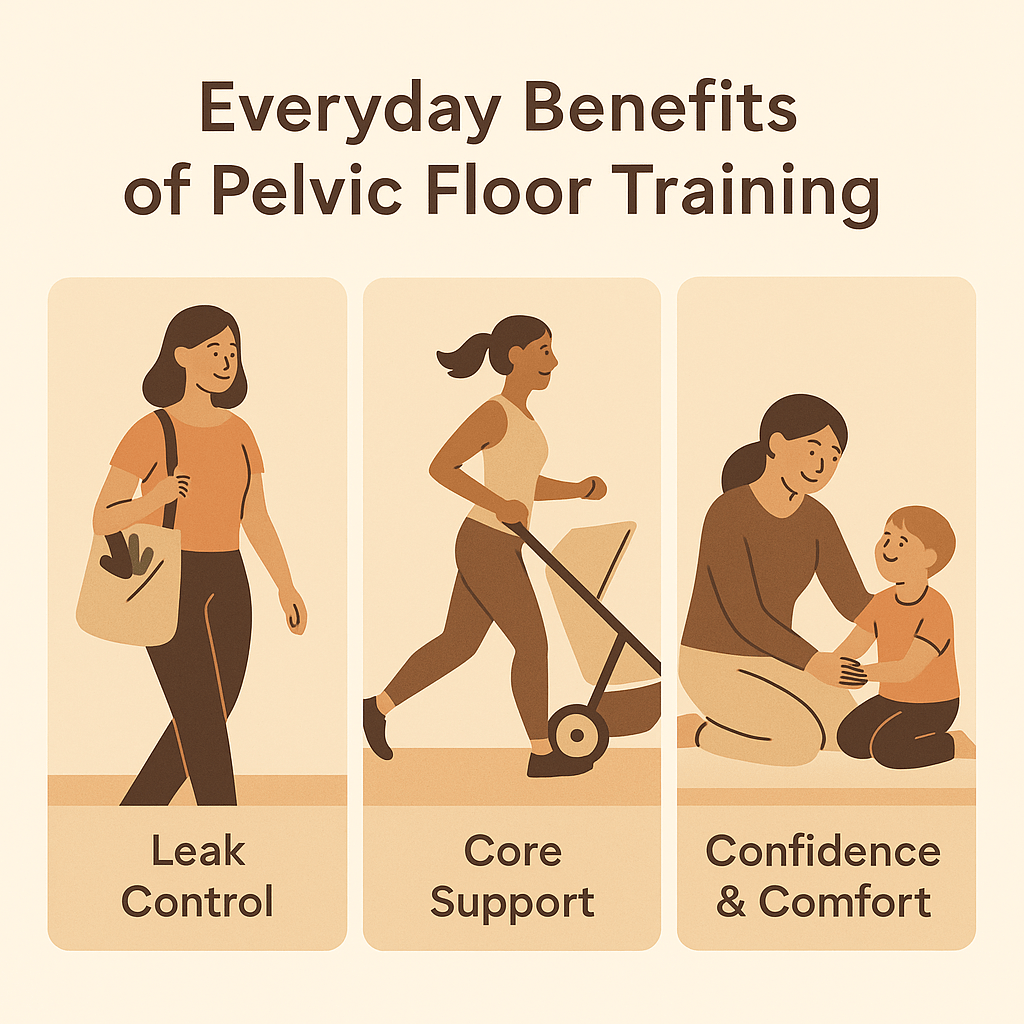

Consistent, gentle-to-progressive pelvic floor work doesn’t just help you “exercise better”—it makes everyday life easier. As coordination and strength return, most women notice fewer leaks, better core support, improved posture, and more comfort with movement and intimacy. You’ll feel steadier when lifting the car seat, walking upstairs, or going for a jog, and more relaxed through your abdomen and back. These small wins compound, building confidence and a sense of control over your body again.


Once you’ve built awareness and confidence, supportive tools can help you progress more smoothly. The Femme Flexor is designed with postpartum recovery in mind—made from 100% body-safe silicone, it provides gentle resistance that helps your pelvic floor strengthen naturally. Think of it as a guide: subtle feedback that makes it easier to feel your muscles working and track your progress. While not required, many women find that using a safe training aid brings faster results and extra reassurance.
Most women can begin gentle breathing and awareness exercises in the first days postpartum. Structured training usually begins after your 6-week checkup, with progression over months.
Start with diaphragmatic breathing and gentle contractions, then progress to longer holds and endurance exercises. Supportive tools like the Femme Flexor can help you track progress safely.
Seek help if you notice urinary leaks, pelvic heaviness, pain with intimacy or daily activity, or a bulge in the vaginal area. These may be signs of pelvic floor dysfunction.
Recovery varies. Many women see improvements in 3–6 months with consistent training, but full restoration can take up to a year depending on delivery and individual factors.
Yes. Stronger pelvic floor muscles can improve sensation, reduce discomfort, and restore confidence during intimacy.

That nagging lower back pain might not be "just your back." Your pelvic floor is part of your deep core system, and when it's weak or dysfunctional, your spine loses...

Ready to start training with your FemmeFlexor? This beginner-friendly guide walks you through every step; from preparing your space and comfortable insertion to building a progressive routine. Learn proper technique,...

Bladder leaks when you laugh? Pelvic heaviness by day's end? These common signs mean your pelvic floor is asking for help. Learn what the 5 key symptoms actually mean, when...